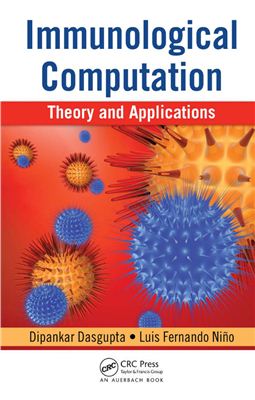CRC Press,Taylor & Francis Group and Auerbach Publications, 2009,
277 pages
Clearly, nature has been very effective in creating organisms that are capable of protecting themselves against a wide variety of pathogens such as bacteria, fungi, and parasites. The powerful information-processing capabilities of the immune system, such as feature extraction, patte recognition, leaing, memory, and its distributive nature provide rich metaphors that researchers are finding very useful for the development of computational models. While some of these models are designed to give us a better understanding of the immune system, other models are being developed to solve complex real-world problems such as anomaly detection, patte recognition, data analysis (clustering), function optimization, and computer security.
Immunology Basics
Th eoretical Models of Immune Processes
Immunity-Based Computational Models
T Cell–Inspired Algorithms
B Cell–Inspired Algorithms
Latest Immune Models and Hybrid Approaches
Real-World Applications
Clearly, nature has been very effective in creating organisms that are capable of protecting themselves against a wide variety of pathogens such as bacteria, fungi, and parasites. The powerful information-processing capabilities of the immune system, such as feature extraction, patte recognition, leaing, memory, and its distributive nature provide rich metaphors that researchers are finding very useful for the development of computational models. While some of these models are designed to give us a better understanding of the immune system, other models are being developed to solve complex real-world problems such as anomaly detection, patte recognition, data analysis (clustering), function optimization, and computer security.
Immunology Basics
Th eoretical Models of Immune Processes
Immunity-Based Computational Models
T Cell–Inspired Algorithms
B Cell–Inspired Algorithms
Latest Immune Models and Hybrid Approaches
Real-World Applications

